Max Gruber - Past Lectures Archive
2022: Michael Rout
The Rockefeller University, New York
Title of the talk: "A Tour of the Pore: Insights into the Architecture and Function Adaptations of the Nuclear Pore Complex"
Nuclear Pore Complexes (NPCs) mediate the transport of RNAs and proteins between the cytoplasm and nucleoplasm. We have used an integrative approach to determine a structure for the entire 52 MDa yeast NPC, revealing the NPC’s functional elements in unprecedented detail. The NPC is surprisingly modular, consisting of only 30 proteins of the nucleoporin family (Nups), which assemble into relatively rigid higher-order scaffold whose modules are held together by flexible connectors, imbuing the NPC with both strength and flexibility. The scaffold surrounds a central channel from which multiple intrinsically disordered Phe-Gly (FG) repeat motifs project which mediate selective nucleocytoplasmic transport through specific interactions with nuclear transport factors. I will describe how our latest findings allows us to rationalize key aspects of the architecture, evolutionary origins and transport mechanism of the NPC.
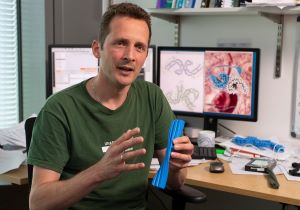
Cambridge Biomedical Campus, Cambridge, UK
Title: "Cryo-EM structures of amyloids from human brain”
The assembly of microtubule-associated protein tau into abundant amyloid inclusions underlies many neurodegenerative diseases called tauopathies. Tau inclusions display distinct neuroana-tomical and cellular distributions between different tauopathies. Morphological and biochemical differences suggest that amyloid filaments of the tau protein adopt disease-specific molecular conformations. Molecular conformers of filamentous tau may give rise to different neuropatho-logical phenotypes, similar to prion strains, but the underlying structures were not known. Using electron cryo-microscopy (cryo-EM), we determined the structures of tau filaments that were extracted from the brains of individuals with Alzheimer’s disease, Pick’s disease, chronic traumatic encephalopathy (CTE) and corticobasal degeneration (CBD). I will discuss our latest advances in cryo-EM structure determination, illustrating how true atomic resolution can now be obtained, and explain how our amyloid structures have revealed unexpected differences between the tau filaments from the different diseases, and how they provide exciting avenues to unravel the mechanisms of amyloid formation in neurodegeneration.
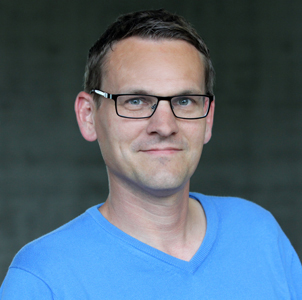
Technical University Dresden, Germany
Title: Phase separation as an organizing principle in biology
Simon Alberti is Professor and Chair of Cellular Biochemistry at the Technical University Dresden, Biotechnology Center (BIOTEC), Center for Molecular and Cellular Bioengineering (CMCB). He received his PhD in 2004 in Biology from the University of Bonn, Germany. In 2005 he joined the lab of Susan Lindquist at the Whitehead Institute for Biomedical Research (Cambridge, USA), where he worked on prions and amyloids. In 2010 he started his independent career as a group leader at the Max Planck Institute of Molecular Cell Biology and Genetics in Dresden, Germany, where he studied proteostasis and the molecular principles underlying cytoplasmic organization. Simon Alberti aims to understand how cells change their internal organization upon environmental perturbations, stress and aging. Recent work from his lab shows that stressed cells form many membraneless compartments in the cytoplasm via a biochemical process known as phase separation. However, the initially beneficial ability to form such compartments becomes detrimental with increasing age, because compartment-forming tend to misfold and aggregate and thus are closely tied to aging and the pathogenesis associated with age-related diseases such as amyotrophic lateral sclerosis. Thus, recent efforts in the lab are focused on understanding the molecular links between cytoplasmic organization, membraneless compartments and age-related diseases.
Key references: Wang et al., Cell 174 (2018) 688; Maharana et al., Science 360 (2018) 918; Franzmann et al., Science 359 (2018) eaao5654; Munder et al., eLife, 5 (2016) e09347; Patel et al., Cell 162 (2015) 1066.
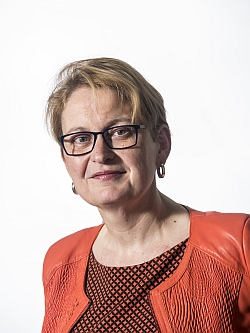
University Medical Center Groningen
Lodewijk Sandkuijl Professor of Human Genetics
Title: "We and our small friends: the ins and outs of our gut microbiome"
The human gut microbiome plays a major role in the production of vitamins, enzymes, and other compounds that regulate our metabolic and immune systems. To study the factors that affect the interaction between host and environmental and exogenous factors we have built LifeLines-DEEP, a multi-omics biobank that is part of LifeLines; Lifelines is a large population-based longitudinal cohort study in the northern part of Netherlands and includes 167,000 participants from which approximately 2000 phenotypes are collected per person. LifeLines-DEEP consists of 1,500 individuals (42% males, age range 18-81 years) for whom we have dietary, genetic, gut microbiome, immune and metabolic profiles. Our LifeLines-DEEP data show that the gut microbiome is a complex ecosystem influenced by many factors, including genetics, intrinsic factors, diet, medication and environmental factors; the non-genetic factors have a much stronger impact on the composition and diversity of gut microbes than host genetic factors.
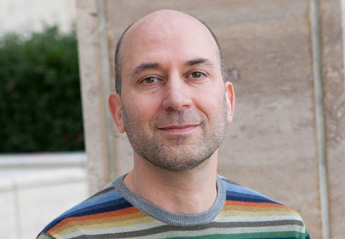
University of California, San Francisco
Howard Hughes Medical Institute
Title: "Monitoring translation in time and space with ribosome profiling"
This talk will center around recent applications of ribosome profiling including the identification of novel protein coding regions, the demonstration of the principle of proportional synthesis of subunits in multiproteincomplexes, and monitoring localized protein translation.
In addition, recent findings will be shown related to the identification and characterisation of the ribosome quality control (RQC) complex, which is responsible for degrading nascent chains from failed translation reactions. This will include our discovery of a remarkable mechanism for tagging such nascent chains with carboxy-terminal alanine and threonine extensions (CAT tails) through a noncanonicaltranslation reaction that is independent of mRNA or 40S subunits.

Department of Biochemistry, University of Oxford
Title: "Choreography of bacterial proteins revealed by live cell imaging"
It is now clear that bacteria are not bags of diffusing chemicals, dividing in the middle to produce 2 daughter cells, but highlyorganisedorganisms. Many bacterial species swim by rotating helical flagella, biasing their swimming direction to an optimum environment for growth using a complex chemosensory system. Using live cell imaging, molecular genetics and biophysics we havecharacterisedtheremodellingof both the bacterial flagellar motor and relatedinjectisome, showing both undergo protein exchange while functioning, and this relates to their current environment. On division daughter cells need to have the correct complement of chemosensory proteins to control flagellarbehaviourand compete in changing environment. We havecharacterisedthe relationship between the segregation of the 2 Rhodobactersphaeroides chromosomes, the chemosensorysignallingcomplexes and septum formation and revealed a complex interrelationship. Together these projects illustrate the complexity of bacterial growth andbehaviour, and perhaps novel targets for controlling bacterialcolonisation.

Title: "In the right place at the right time: Molecular regulation by the complement system in immune defense"
The complement system is an important arm of the mammalian immune defense in blood and interstitial fluids. Complement is formed by ~30 large multi-domain plasma proteins and cell-surface receptors. Together these proteins enable the host to recognize, lyse and clear invading microbes and altered host cells, while protecting healthy host cells and tissue.
We have studied the molecular mechanisms of recognition and regulation of the multi-component protein regulatory pathways formed by the complement system. Through several crystallographic studies we revealed the mechanisms at work in the amplification loop of complement. Recent data provide insights into the host protection mechanisms that protect healthy host cells from complement attack. Using EM tomography we demonstrated the formation of immune complexes that initiate complement. Overall, our data highlight principle mechanisms that are employed by regulatory pathways to ensure localization, initiation, amplification and inhibition, i.e. to ensure activity at the right place and time.
Key references:
M.A. Hadders, D. Bubeck et al. Cell Reports 1, 200-207 (2012)
C. Diebolder, F. Beurskens et al., Science 343, 1261-1263 (2014)
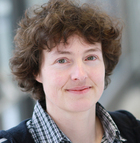
2014: Petra Schwille
Biological cells, the minimal units of life, are highly complex entities. Yet life must have started much simpler, at some unknown time long ago, and with unknown components. Based on today's knowledge of physics, chemistry and biology, our goal is to reconstitute conditions that allow biological molecules to settle into self-organized and self-reproducing systems, thus establishing preconditions for life in a bottom-up synthetic biology approach. In this context we explored the reconstitution of the essential first steps of -bacterial- cell division in a cell-free system, consisting of only a few protein species, an energy source and a membrane compartment. We were able to establish and quantitatively elucidate the self-organization of the (contractile) Z ring positioning machinery, MinCDE, into waves and oscillations, the formation of FtsZ protorings at the membrane and their positioning to the geometric center of the compartment. Furthermore, we systematically studied the influence of various physical and chemical cues on pattern and gradient formation to establish a better understanding of the fundamental requirements for correct orchestration of the bacterial cell division machinery in space and time.

Zentrum fur Molekulare Biologie der Universität Heidelberg (ZMBH)
Protein aggregation is an organized process in all cells from bacteria to human, leading to the deposition of aggregates at specific sites. Such sequestration of misfolded proteins can be protective for cell function, presumably by facilitating activities of the protein quality control network and by sequestering harmful protein species. Cells can remove aggregates by either degradation or disaggregation and refolding of aggregated polypeptides to the native state. Disaggregation in bacteria, yeast and plant cells requires the joint action of a disaggregase of the Hsp100 family (ClpB in bacteria or Hsp104 in yeast) and Hsp70 with its co-chaperones. This bichaperone system extracts individual polypeptides from the aggregate which are then threaded through the central pore of the disaggregase and refolded to the native state. Hsp70 acts by targeting Hsp100 to aggregates and activating the threading activity, involving the middle domain of Hsp100 as a toggle. However, Hsp100 disaggregases are lacking in animal cells and thus it has been a mystery whether and how aggregates can be resolubilized. A potent disaggregating activity in metazoa is provided the cooperating action of Hsp70 and Hsp110. This seminar will descibe principles of aggregate formation in yeast cells as well as mechanisms of protein disaggregation in bacteria, yeast and human cells.

Dartmouth Medical School, Hanover, NH, USA
Wickner has developed yeast vacuoles as a paradigm of membrane fusion in endocytic and exocytic traffic. Each stage of this traffic, from yeast to humans, uses similar Rabs, effector complexes, SNAREs, and SNARE chaperones. In addition to studying vacuole fusion in vivo and in vitro, Wickner reconstituted proteoliposome fusion with all-purified components. This system has revealed detailed basic features of the underlying fusion mechanism, which will be discussed. In addition, several fusion catalysts have been identified that undergo regulated cycles,including. HOPS and Sec17/18p, which synergistically support fusion as SNAREs cycle between cis-complexes, the uncomplexed state, and trans-complexes, and the vacuolar kinase Yck3p and unknown phosphatase(s) that regulate HOPS phosphorylation. Understanding the vacuolar HOPS complex, discovered and studied in this work, underlies studies of human arthrogryposis, renal dysfunction, and cholestasis syndromes, caused by mutations in the human VPS33 gene. Human HOPS has recently been shown to have a unique and central role in Marburg and Ebola virus invasion of human cells.

Scrips, La Jolla, CA, USA
Clathrin mediated endocytosis (CME) is initiated by the assembly of coat proteins, clathrin and adaptors to form nascent clathrin coated pits (CCPs). As they grow, CCPs gain curvature and invaginate until connected by narrow necks, which undergo fission to release clathrin coated vesicles (CCVs). Live cell imaging of GFP-clathrin using total internal reflection fluorescence microscopy (TIR-FM) has shown that a large subpopulation of nascent CCPs are aborted, leading to the suggestion that an endocytosis ‘check-point’ monitors the fidelity of CCP maturation and regulates entry into the cell. The large GTPase, dynamin is essential for CME. As the ‘brains’ it functions to monitor the fidelity of early stages in CCV formation and to control the endocytosis checkpoint. As the ‘brawn’ dynamin uses its mechanochemical activity to catalyze membrane fission. Interestingly, differential in vivo and in vitro properties of two closely related dynamin isoforms, the neuron-specific dynamin1 and the ubiquitously expressed dynamin2, suggest that they are ideally suited to differentially regulate CME in neurons and nonneuronal cells.
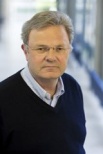
Max Planck Institut, Martinsried, Germany
Single particle electron microscopy has become a powerful method for studying large protein complexes and, in conjunction with other biochemical and biophysical methods, can provide structural models at (pseudo) atomic resolution. This will be exemplified with two proteolytic complexes of extraordinary size, tripeptidyl peptidase II (6 MDa) and the 26S proteasome (2.5 MDa). Electron cryotomography enables the structural analysis of non-repetitive supramolecular structures, such as organelles or even whole cells providing unprecedented insights into their supramolecular organization. In conjunction with subtomogram classification and averaging molecular structures can be studied in situ, i.e. in their functional environment. Studies with polyribosomes or quiescent ribosomes will illustrate the potential of this new approach to structural cell biology.
Medical Research Council Mitochondrial Biology Unit, Cambridge, UK
Structural biology techniques are being used to analyze highly complex protein structures built up from multiple polypeptide chains. One approach is to combine different structural methods to obtain an overall structure. An example of the application of this approach is provided by the ATP synthase complex from mitochondria, a membrane bound structure assembled from thirty polypeptide chains of seventeen different kinds. The enzyme has been purified and resolved biochemically into smaller domains, and these component structures have been determined by X-ray crystallography. Other domains and subunits have been produced by recombinant expression in bacteria, and their structures have been solved by either X-ray crystallography or solution nuclear magnetic resonance methods. These component structures have been assembled within the framework of a low resolution overall structure determined by electron cryo-microscopy of single enzyme complexes, thereby providing an overall mosaic structure. This overall structure has provided the basis for showing that the enzyme is a molecular engine in which the proton motive force across the inner membrane of the mitochondrion is coupled to the chemical synthesis of ATP from ADP and phosphate by a mechanical rotary mechanism, akin to the action of the Wankel motor car engine. It is becoming increasingly apparent that the ATP synthase complexes themselves are organised in arrays, possibly with other enzyme complexes, in the inner membranes of mitochondria, and that these higher order arrangements influence the overall structure and functions of the mitochondrion itself.
The instructions for life are laid down in the genetic information contained within the DNA molecule that harbors all our genes and is located in the nucleus of every cell of our body. Importantly, these instructions should function properly during the entire life span of an organism and should be transmitted faithfully over subsequent generations. However, ubiquitous DNA-damaging agents such as UV light and X-rays and numerous natural and man-made chemicals continuously threaten DNA integrity. In addition, DNA suffers constantly from the damaging effects of reactive oxygen species generated by our own respiration. Moreover, DNA has an intrinsic chemical instability, leading to spontaneous loss of coding information. Spectacular progress in recent years has revealed the dramatic impact of DNA damage on human health and identified damage to DNA as a major cause of onset of cancer, ageing and inherited defects. Ingeniously, to prevent the deleterious consequences of DNA injury the DNA carries also instructions for its own care-taking apparatus. An important component of this self-protecting mechanism is comprised of an intricate network of DNA damage repair systems. These systems attempt to repair the DNA lesions before they give rise to permanent changes in the genetic code leading to cancer and inborn defects or cause cell death or permanent growth arrest contributing to ageing. One of the most versatile repair pathways is called nucleotide excision repair. Patients carrying inborn defects in this repair process suffer from extreme sensitivity to UV radiation in sunlight and to many chemical agents, frequently develop cancer and some patients exhibit dramatic signs of premature aging. The lecture will highlight our current understanding of DNA damage, repair and the overall condition of our genes from studies involving transgenic mice and the impact of DNA damage and repair on health, cancer, aging-related diseases and longevity.
Nitrogenase catalyzes the enzymatic reduction of atmospheric dinitrogen to ammonia during the process of biological nitrogen fixation. Nitrogenase consists of two component metalloproteins, the iron (Fe-) protein and the molybdenum-iron (MoFe-) protein, that together mediate the ATP-hydrolysis dependent reduction of substrates to products. Striking parallels are evident in the interaction of nucleotides with the Fe-protein and a broad class of nucleotide binding proteins involved in transport, signal and energy transduction processes. Recent developments in the structural characterization of the nitrogenase system will be presented, emphasizing the structures of complexes between the component proteins that are relevant to the coupling of ATP hydrolysis to interprotein electron transfer, and a very high resolution crystallographic analysis of the MoFe-protein establishing a previously unrecognized light atom ligand in the center of the active site FeMo-cofactor. Together with kinetic, spectroscopic and synthetic model compound studies, these structures provide a framework for addressing the mechanism of substrate reduction by nitrogenase.
Computer simulation of the dynamics of biomolecular systems by the molecular dynamics (MD) technique yields the possibility of describing the structure-energy-function relationships of molecular processes in terms of interactions at the atomic level. Important processes or thermodynamic equilibria are governed by weak (non-bonded) forces: polypeptide folding, biomolecular association, partitioning between solvents and membrane or micelle formation. When modeling these processes four problems must be addressed: the force field problem, the search problem, the ensemble problem and the experimental problem. These will be discussed and illustrated with examples. Developments to enhance the accuracy and time scale of biomolecular simulations will be addressed.
The use of bioprocesses in the chemical industry has developed gradually in the past few decades. Such processes have been around since the first half of the 20th Century, starting with European fermentation processes for the production of ethanol, butanol, acetic acid, and citric acid. Japan built up a vigorous fermentation industry in the 50’s and 60’s that produced amino acids, vitamins and nucleotides. Today, a bioprocess sector is developing in Europe, the US, Japan and China, which aims at the synthesis of fine chemicals, chiral drug intermediates and is also moving towards bulk chemicals such as acrylamide (Japan), lactic acid (Cargill, US) and propanediol (Dupont, US). This sector has recently been baptized “White Biotech”, and is seen by some as the next major biotechnology wave. Since White Biotech for bulk chemicals will be dependent on agro resources, its development will affect not only the chemical industry, but will also lead to the emergence of a significant agro-chemical sector.
Another sector that has received considerable attention lately is Biomass, which is seen as a major contributor to the alternative energy package of geothermal, wave, wind, solar and biobased energy generation technologies. Biomass options include the use of waste biomass, controlled reforestation and energy rich crops as energy sources. Major programs have developed around biodiesel and bioethanol, the latter especially powerful in Brazil and Australia, based on sugar cane, and lately also in the US, based on corn starch.
The recognition of Biomass based Energy and the more recent emergence of White Biotech as important future technological resources will move these two areas towards the center of debates about agricultural priorities and future land use, water resources, and the long term sustainability of our Ecosystem. These debates will influence future government policies, industrial approaches and societal responses relating to Energy, Environment, Agrochemistry and Industrial Chemistry. Thus, it might be useful to examine a few alternative development scenarios to see which will best serve our future societal needs. The use of bioprocesses in the chemical industry has developed gradually in the past few decades. Such processes have been around since the first half of the 20th Century, starting with European fermentation processes for the production of ethanol, butanol, acetic acid, and citric acid. Japan built up a vigorous fermentation industry in the 50’s and 60’s that produced amino acids, vitamins and nucleotides. Today, a bioprocess sector is developing in Europe, the US, Japan and China, which aims at the synthesis of fine chemicals, chiral drug intermediates and is also moving towards bulk chemicals such as acrylamide (Japan), lactic acid (Cargill, US) and propanediol (Dupont, US). This sector has recently been baptized “White Biotech”, and is seen by some as the next major biotechnology wave. Since White Biotech for bulk chemicals will be dependent on agro resources, its development will affect not only the chemical industry, but will also lead to the emergence of a significant agro-chemical sector.
Another sector that has received considerable attention lately is Biomass, which is seen as a major contributor to the alternative energy package of geothermal, wave, wind, solar and biobased energy generation technologies. Biomass options include the use of waste biomass, controlled reforestation and energy rich crops as energy sources. Major programs have developed around biodiesel and bioethanol, the latter especially powerful in Brazil and Australia, based on sugar cane, and lately also in the US, based on corn starch.
The recognition of Biomass based Energy and the more recent emergence of White Biotech as important future technological resources will move these two areas towards the center of debates about agricultural priorities and future land use, water resources, and the long term sustainability of our Ecosystem. These debates will influence future government policies, industrial approaches and societal responses relating to Energy, Environment, Agrochemistry and Industrial Chemistry. Thus, it might be useful to examine a few alternative development scenarios to see which will best serve our future societal needs.
Many pathogens owe their success to circumventing or compromising the host’s immune response. Large DNA viruses such as Pox- and Herpesviruses are true masters of deception and evasion. The Human Cytomegalovirus (HCMV) encodes a series of small glycoproteins that selectively target and destroy Major Histocompatibility (MHC) proteins, key glycoproteins essential for host defense. The study of how these viral proteins handle the Class I MHC substrates has provided a detailed picture of a protein degradation pathway that is likely to be a more general route for disposal of unwanted proteins. In the course of these studies, the laboratory has made investments in the development of chemistry-based approaches to provide new analytical tools. We have further conducted high-throughput screens in the search of small molecules that might selectively interfere with protein quality control and degradation. What has emerged is a tractable biological model for the study of glycoprotein synthesis, stability and metabolism, with an important role for synthetic chemistry. Some of the newly developed tools are readily applicable to other biological questions.
C. elegans protects progeny against undesired DNA rearrangements by silencing transposition in the germline. We have found mutations in which this silencing is lost. Many of these are also defective in a phenomenon that is called RNA interference or RNAi: the silencing of gene expression after experimental application of double-stranded RNA. This field of research has recently exploded, when it turned out that the underlaying mechanism is almost universal, and found in fungi, plants and animals. Our current picture of the mechanism will be presented.
Vitamin B6

contact: maxgruber@rug.nl
